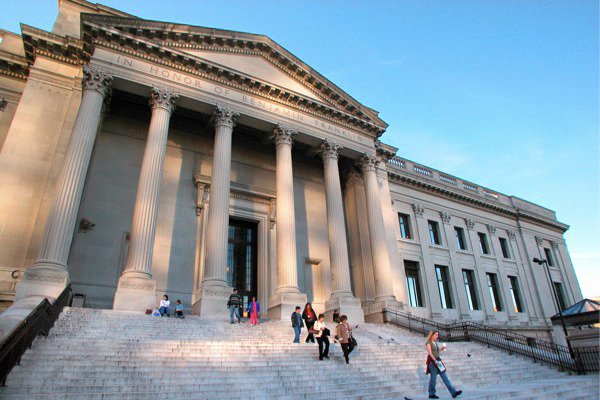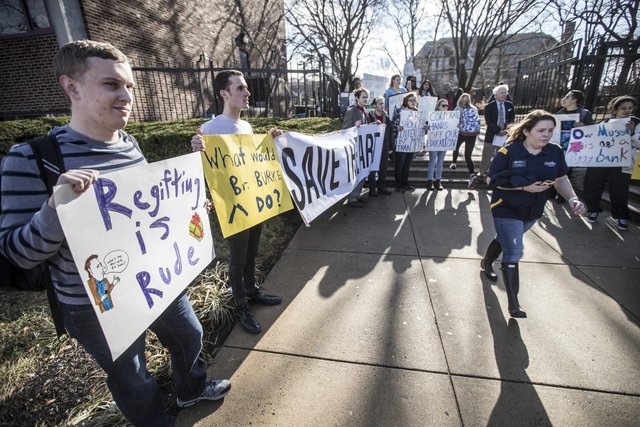Opening More Than Doors: Grappling with Deaccession
Happy Monday, Steemians! We’re down to the last few weeks of the semester, and soon, we’ll have to actually decide upon a nonprofit to fund. While we wait on yet more emails, I want to dig into some of the nonprofit management topics we’ve been discussing in class. Today: deaccession.
Deaccession Pros
Deaccessioning is the process of officially removing an object from a museum, archive, or library’s holdings. It’s like spring cleaning the attic, but with thousands of ethical implications and the cultural welfare of the community to consider. We often refer to cultural institutions as repositories, so it’s strange to imagine they might ever change their collections by removing items. Even as a student of public history and former archival assistant, I first learned about the concept only a few months ago. For those keen on preserving every and all historical items, I’m sure the concept sounds like anathema, but by deaccessioning items, cultural work can often become more focused and cost effective.
....and Cons
However, when mismanaged, it can also be incredibly harmful to community relations and our shared cultural heritage. Philadelphia’s Franklin Institute sold almost all of its library holdings in 1986 and 87 in order to fund exhibit space expansion. In a largely unpublicized sale, Benjamin Franklin’s personal collection of early American writings on science and technology were sold piecemeal to different repositories or to private buyers at auction. James Green of the Library Company writes that though the libraries of Philadelphia were not consulted about the sale or allowed time to find sufficient funds, they were able to acquire some of the most important materials. Due to a lack of communication, the scattered collection (or what remains of it) now lacks context and provenance. In the eyes of the Library Company of Philadelphia, this loss could have been avoided with a more honest and organized deaccessioning procedure.

The Franklin Institute, 2017.
In Nina Simon’s view, this sale and deaccessioning process would have also needed consultation with the public in addition to the museum community. In an article describing a similarly unpublicized and misguided deaccessioning battle at the Berkshire Museum, Simon says that the process of selling objects reveals an insidious trend in the nonprofit community: “the continued slide of museums away from the public trust and into the market economy.” According to Simon, nonprofits are uniquely positioned to craft creative and collaborative alternatives to capitalist measures. Museums share authority and ownership of their objects with the community they claim to serve, and as such, they must consult the community and continuously place them first.

A January 2018 protest of students and staff at LaSalle University. To the dismay of the university community, its Library intends to sell artwork in order to fund new construction. Photo courtesy of Philly.com.
Obviously, the realities of cultural work make market economy measures appealing. Cultural funding is limited and continuously dwindling, so why not sell a few of your holdings for extra capital? Isn’t the public better served by a museum that remains open? Aren't we helping the public by keeping the lights on?
While I understand that argument, I disagree that the public is better served by a museum that simply stays open. The Franklin Institute assumed what the public wanted by eliminating its library, but in the new exhibit spaces funded by that sale, it hosts traveling exhibits with zero ties to the community. It’s doors stay open, but it’s programming is expensive and closed off from the surrounding public it serves. Simon asks nonprofits to think beyond the exploitative restraints of the market economy. I believe that simply opening conversation and inviting collaboration can help us achieve these goals.
Sources:
James N. Green, The Franklin Institute Sale, Annual Report of The Library Company of Philadelphia for 1987, pp. 7-15.
Nina Simon, “Instead of Selling Objects, Build Public Trust,” Museum 2.0, January 8, 2018 http://museumtwo.blogspot.com/2018/01/instead-of-selling-objects-build-public.html
100% of the SBD rewards from this #explore1918 post will support the Philadelphia History Initiative @phillyhistory. This crypto-experiment conducted by graduate courses at Temple University's Center for Public History and MLA Program, is exploring history and empowering education. Click here to learn more.
So... what exactly is thinking beyond the market economy? Can anyone cite a worthy example for discussion in the case of a cultural nonprofit, past or present?
I couldn't think of anything beyond Nina Simon's examples of zoos or Britain's regulations on sales out of the country. Outside of museums, does it make sense to re-tool an institution to function like the Green Bay Packers? The community invests in the team and then gets returns on their investment.
Or like food co-ops where community members work within the store, have a say in the products, and daily operations?
Brief Google searches didn't immediately reveal anything that collaborative in public history.
I don't know of any innovative examples, but museums have traditionally operated outside the market economy. By identifying an object as worthy of protection, it was withdrawn from the market; its value to the public greater than to any one person. I get the sense that the strong art market may have changed this, but think about the Barnes example: Barnes wasn't buying works of art as investments for himself but as priceless assets of his audience. I think the market economy is a relatively new intruder in many of America's museums, actually, but I could be wrong?
https://steemit.com/@a-0-0